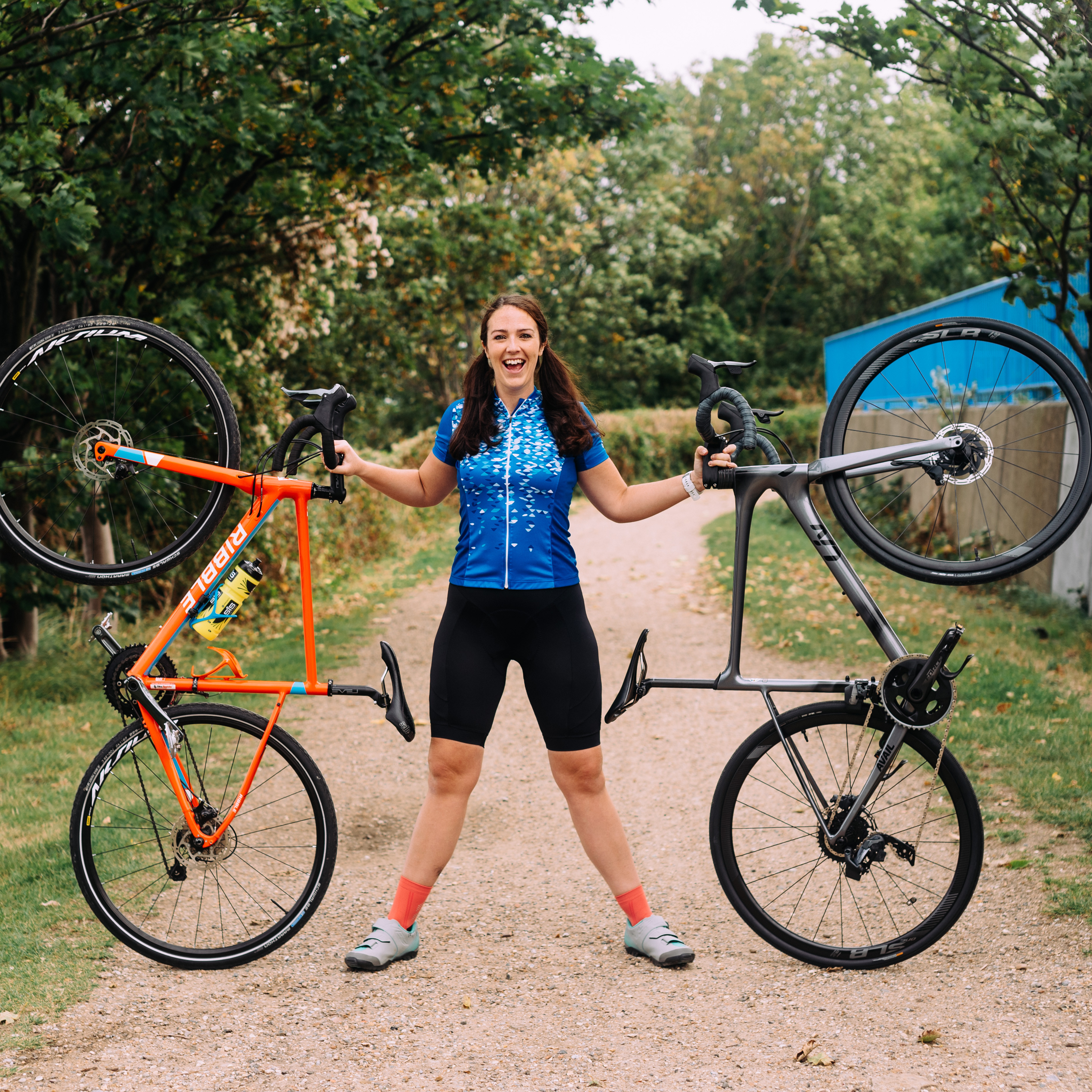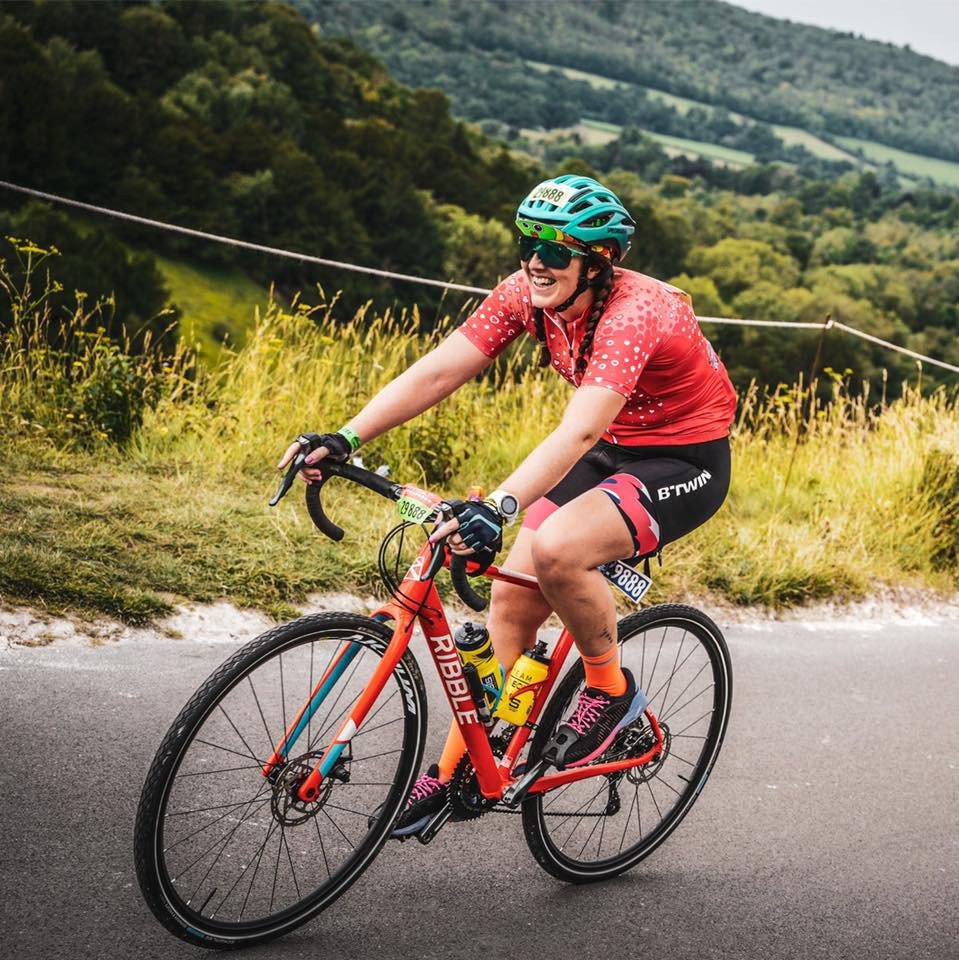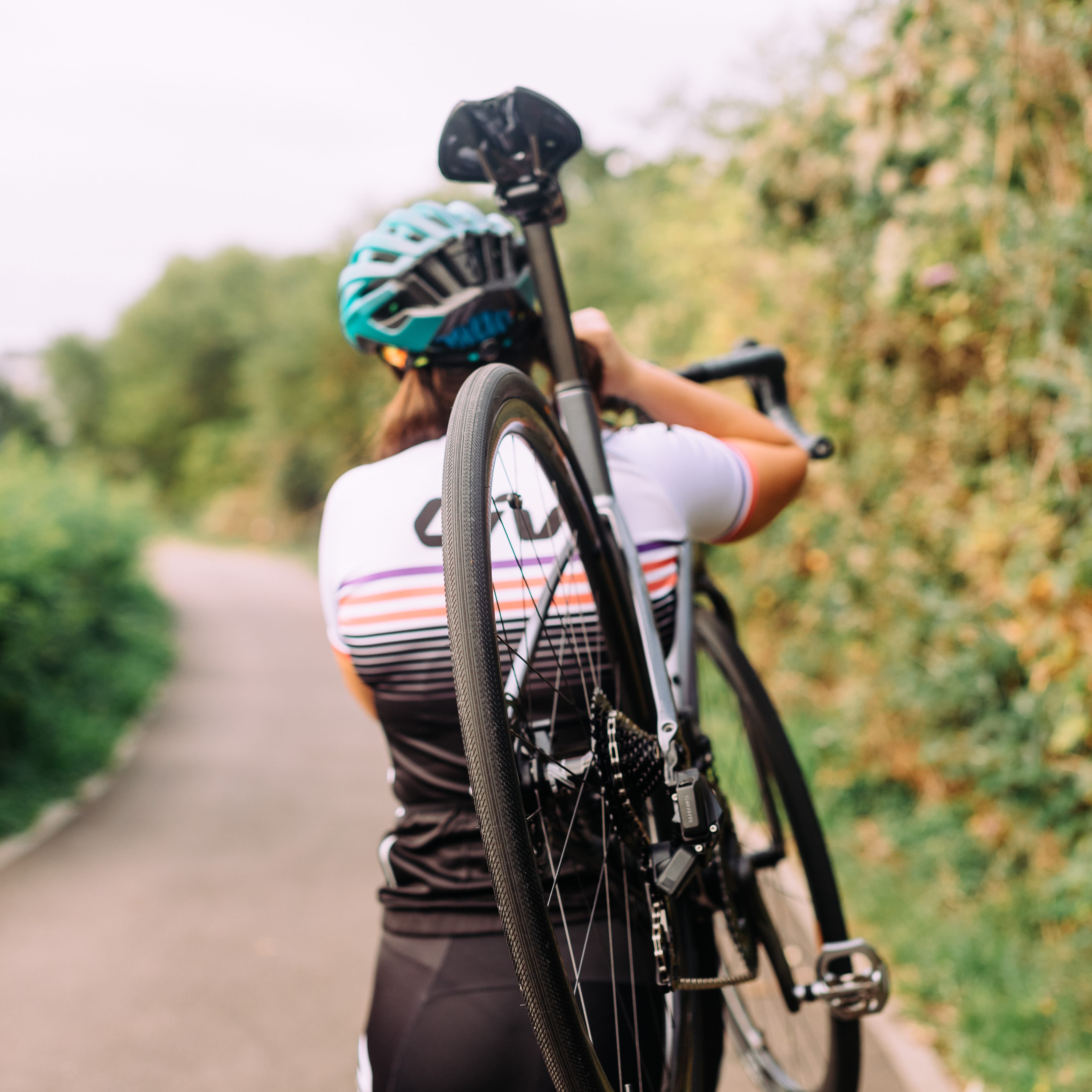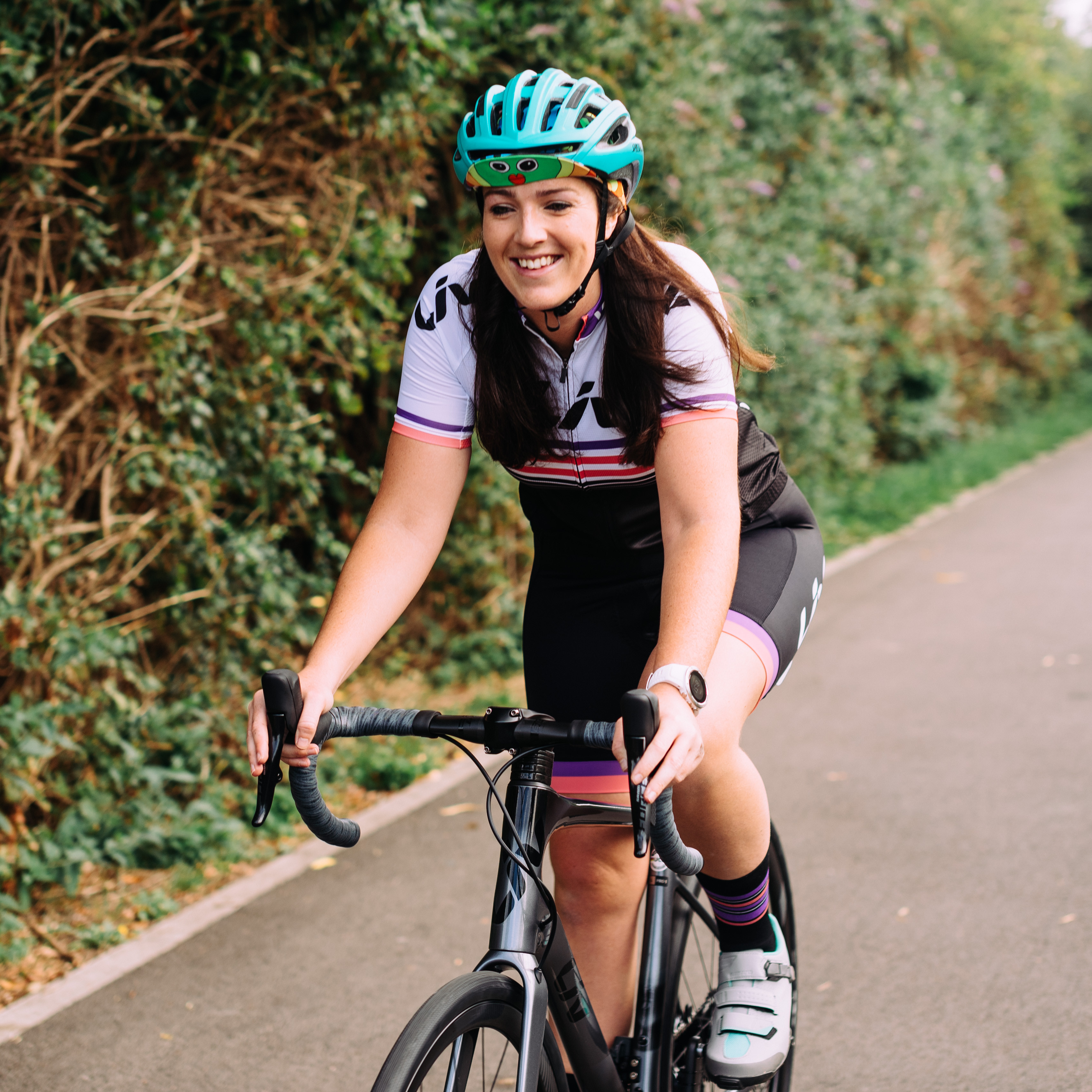Buying your first road bike should be exciting, but it’s easy to feel overwhelmed. With so many options and technical terms, knowing where to start can be tough. A road bike is a significant investment, and making the right choice takes time and thought. But don’t worry, with the right information, the process can be much clearer and more enjoyable.
One of the first steps is to consider what you want to use your bike for and what your budget is. Are you looking for fitness, road racing, triathlon training, commuting, or just a way to explore and improve your cycling skills? Once you’ve identified your goals, you can start exploring the road bike options available within your price range and understand what you can expect for your money.
This guide aims to break down the barriers, answer common questions, and explain the jargon, turning your bike purchase into an exciting step forward in your cycling journey, rather than a confusing chore.
 190912-annarachelphotography-71929
190912-annarachelphotography-71929
Image: A cyclist riding a road bike on a paved road, showcasing the typical riding posture and environment for road bikes.
Where to Buy a Novice Road Bike
Road bikes are available from various sources, both online and in physical stores. Large retailers like Evans Cycles, Halfords (in the UK), and Decathlon offer a wide selection of brands, including well-known names like Specialized, Cannondale, Trek, and Cube, as well as their own in-house brands such as Pinnacle (Evans), Boardman (Halfords), and B’Twin (Decathlon).
Independent bike shops are also excellent resources, and it’s worth searching for local options. Some brands like Liv, Giant, and Ribble also allow direct online purchases. If you’re buying online, pay close attention to sizing charts and don’t hesitate to contact the retailer to discuss any uncertainties.
The second-hand market, including local marketplaces and eBay, can be a budget-friendly option. However, if you buy a used bike, it’s highly recommended to have it serviced and get the brakes checked by a professional mechanic to ensure safety and optimal performance.
Budgeting for Your First Road Bike
Setting a budget for your first road bike can be tricky, as needs and financial situations vary greatly. Generally, an “entry-level” road bike starts around £300 or more. As you approach the £1,000 mark and beyond, you’ll have more choices in terms of components like groupsets and gears. The general principle is that a larger budget opens up more options and potentially higher-quality components.
Consider checking if your workplace participates in a cycle-to-work scheme, which can offer tax benefits on bike purchases for commuting. It’s wise to shop around, compare prices and components, and take your time in making a decision. Remember, the price of your bike doesn’t define you as a cyclist. The most important thing is the enjoyment and experience you get from riding.
Understanding Different Types of Bikes
While this guide focuses on Novice Road Bikes, it’s helpful to understand the broader bike categories available:
Road Bikes: As the name suggests, road bikes are designed for paved roads. They are built for efficiency, featuring lightweight materials, narrow tires, and drop handlebars (the ones that curve downwards). Within road bikes, you’ll find variations for racing, commuting, and triathlon, each with slightly different geometries and features.
 190912-annarachelphotography-72078
190912-annarachelphotography-72078
Image: A close-up of drop handlebars on a road bike, highlighting the brake levers and gear shifters, key features that distinguish road bikes.
Gravel Bikes: Similar to road bikes in having drop handlebars, gravel bikes are designed for unpaved roads like gravel and dirt paths. They offer wider tire clearance for chunkier, more versatile tires, and are often considered more comfortable for longer rides on varied surfaces. Cyclocross bikes are related but are more specifically designed for racing on cyclocross courses.
Mountain Bikes: Built for off-road terrain like trails, mountains, and dirt paths. Mountain bikes feature wide, knobby tires, flat handlebars for more upright control, and suspension systems to absorb shocks from uneven surfaces.
Hybrid Bikes: Hybrids combine features of road and mountain bikes, making them versatile for various terrains. Some lean more towards road bike characteristics, while others are closer to mountain bikes. They typically have flat handlebars for a more upright and comfortable riding position, though they might not be as fast as road bikes. Hybrid bikes often use wider tires for comfort and stability, making them excellent all-around bikes.
 20×30-PRLG6670
20×30-PRLG6670
Image: A person riding a hybrid bike in a city setting, illustrating the upright riding position and suitability of hybrid bikes for urban environments.
Cruiser and Comfort Bikes: These prioritize comfort, with very upright riding positions, wider tires, padded seats, and sometimes pedals positioned slightly forward for relaxed riding.
e-Bikes: Electric bikes are available in most of the styles above. They include a motor to assist pedaling, making cycling easier, especially on hills or longer distances. E-bikes are gaining popularity and are even allowed in many cycling events now.
Key Components to Consider When Choosing a Road Bike
When selecting your novice road bike, focus on the frame, groupset, brakes, and tires. Don’t just look at the price tag; evaluate what components you’re getting for your money and the overall value. Have a budget in mind, but be prepared to be a little flexible if spending slightly more can significantly improve component quality, such as a better groupset. Here are crucial aspects to consider:
Bike Frame and Sizing
The frame is the backbone of the bike, holding all other parts together. Road bike frames are commonly made from aluminum or carbon fiber, with carbon fiber being lighter and often more comfortable but also more expensive.
Bike sizing is crucial. Frames are often sized as small, medium, large, or numerically (e.g., 52cm, 54cm). It’s vital to choose the right frame size for your height. Sizing can vary between brands, so always consult the manufacturer’s size guide and, if unsure, contact the retailer. Ideally, for your first road bike, try to test ride bikes in a store to determine the most comfortable and appropriate frame size.
Another consideration is whether you’d prefer a women’s-specific frame. The saying “a woman’s bike is any bike that fits a woman” is quite accurate. Many frames are unisex, but traditionally, they have been designed around male dimensions. Women’s-specific frames often feature a shorter stack height (vertical distance from the pedals to the handlebars) and a shorter reach (horizontal distance). These adjustments can offer improved comfort, especially for longer rides, and better control, particularly when braking. While women’s-specific frames can be beneficial, especially for comfort and confidence, the range of available models might be smaller. Adjustments to a standard frame, such as saddle, stem height, and handlebar tilt, can also achieve a comfortable fit. Testing a women’s-specific frame is recommended if possible, but ultimately, personal comfort and fit are paramount.
Most first-time buyers will purchase a complete bike rather than building one from a frame. If you are considering building your own bike in the future, frame geometry becomes even more critical, depending on your intended riding style.
The fork, which holds the front wheel, is also important. Fork width, along with frame clearance around the rear tire, determines tire clearance – the maximum tire width your bike can accommodate.
Beyond technical specs, don’t dismiss the importance of frame color! Liking the appearance of your bike is a significant part of enjoying it.
 67950496_10157692786597792_1873169674556932096_n
67950496_10157692786597792_1873169674556932096_n
Image: A group of cyclists riding road bikes in a race or event, showcasing various bike colors and styles, and the social aspect of road cycling.
Understanding Groupsets: Gears and Shifting
After the frame, the groupset is arguably the next most critical component. The groupset significantly influences the bike’s price and performance. It includes components for braking, gear changing, and propulsion. The term “drivetrain” is sometimes used to describe the pedals, cassette (rear gears), and derailleurs (gear shifters).
The main groupset manufacturers are Shimano, SRAM, and Campagnolo. Shimano is very common on road bikes, and this guide will focus primarily on Shimano and SRAM.
Groupsets vary in quality and performance, often reflected in the price. Shimano’s entry-level groupsets are Claris and Sora. Sora is a good starting point, suitable for general road riding and even longer events. Stepping up to Tiagra offers noticeable improvements in gear shifting smoothness and speed, making it a worthwhile upgrade if your budget allows, particularly for hilly routes or sportives. However, Sora groupsets are still perfectly functional and reliable for novice cyclists.
Shimano’s performance-focused groupsets include 105 and Ultegra. The 105 is often considered the best balance of performance and affordability, offering 11-speed gearing (compared to 10-speed Tiagra and 9-speed Sora), which provides smoother transitions and better performance on climbs. Ultegra is another 11-speed groupset, closer to professional-grade performance and typically found on bikes in a higher price range.
For SRAM, the entry-level groupset is Apex, followed by Rival, which is a popular mid-range option. Force is a lighter, higher-performance groupset often preferred by competitive cyclists.
Electronic groupsets, like SRAM eTap and Shimano Di2, offer electronic gear shifting with the push of a button. These provide very smooth and fast gear changes but are more expensive and require battery charging. For a novice road bike, mechanical groupsets are generally sufficient and more cost-effective.
When comparing bikes, don’t just focus on the price. Look closely at the groupset components. If a slightly more expensive bike has a higher-level groupset (e.g., Tiagra or 105 instead of Sora), it’s often a worthwhile investment for improved performance and longevity.
Brakes: Rim vs. Disc Brakes
Brakes are essential for safety and control. When discussing brakes, we are referring to the brake levers on the handlebars, the brake calipers themselves, and the cables connecting them. The main types are rim brakes and disc brakes.
Rim brakes apply force to the wheel rim using calipers. Disc brakes, more common on mountain bikes and increasingly on road bikes, use a rotor mounted at the wheel’s center, with the caliper applying force to the rotor. Disc brakes have become more prevalent in road cycling due to their enhanced performance.
Choosing between rim and disc brakes often comes down to personal preference and budget. Rim brakes are generally easier to maintain and less expensive, making bikes with rim brakes more budget-friendly. Disc brakes, however, are praised for their superior stopping power, especially in wet conditions and on steep descents, and they offer more consistent performance regardless of rim condition. Disc brakes also tend to offer better modulation, allowing for more controlled braking.
Personal experience suggests disc brakes offer a noticeable advantage in stopping power and confidence, especially in varied weather and terrain. While bikes with disc brakes might be slightly more expensive, the improved braking performance can be a valuable investment, particularly for novice riders seeking extra confidence.
Regarding brake setup, some cyclists have a preference for front vs. rear brake lever positioning (sometimes referred to as “European” or “UK” setup). While you may not get to choose this initially, it’s something you can adapt to. The most important thing is to become familiar and comfortable with your bike’s brake system and practice safe braking techniques.
 190912-annarachelphotography-71908
190912-annarachelphotography-71908
Image: A close-up of disc brakes on a road bike wheel, highlighting the rotor and caliper, and emphasizing the modern braking technology.
Road Bike Tires
When you buy a complete road bike, it will come with tires deemed appropriate for the bike’s intended use. However, tires are easily changeable, and you might want to switch tires based on seasons or as your riding confidence grows.
Tire width is a significant factor, determined by your frame and fork’s tire clearance, wheel compatibility, mudguard use, and riding style. Road bike tire widths typically range from 23mm to 32mm. Wider tires, such as 28mm and wider, have become increasingly popular, offering more comfort, better grip, and increased confidence, especially on less-than-perfect road surfaces. While wider tires might slightly increase rolling resistance, the gains in comfort and stability often outweigh this, particularly for novice riders. Aim for a bike that can accommodate at least 28mm tires for versatility. This allows you to choose more comfortable, puncture-resistant tires for general riding and potentially switch to narrower, faster tires later if desired.
Puncture resistance is another key tire feature. Tires marketed as puncture-resistant, like Schwalbe Marathon or Continental GatorSkin, incorporate layers of protective material under the tread to minimize punctures. These are highly recommended for commuting or riding on varied road surfaces, offering added peace of mind. While no tire is entirely puncture-proof, these resistant tires significantly reduce the likelihood of flats.
Customizing Your Road Bike
After purchasing your novice road bike, you can further customize it for comfort and performance. Pedals usually need to be added, and you can choose from clipless pedals (requiring cycling shoes with cleats), flat pedals, toe clips, or dual-sided pedals.
The saddle is a very personal choice. Women-specific saddles (e.g., Selle Italia Diva Flow, Liv Contact SL Forward) are often recommended for female riders to improve comfort and prevent discomfort.
You can also adjust or replace the stem and handlebar angle to fine-tune your riding position and make reaching the brakes and shifters easier. These adjustments can significantly enhance your comfort and control on the bike.
Final Thoughts
Buying your first road bike should be an enjoyable experience. Don’t hesitate to ask for advice at bike shops and from experienced cyclists. No question is too basic – it’s a significant purchase, and feeling informed and confident in your decision is essential. Embrace the process, enjoy learning about bikes, and look forward to the adventures your new road bike will bring!
Happy cycling!
Becca xxx
You might also find helpful: Top Tips for Beginner Cyclists
 190912-annarachelphotography-71880
190912-annarachelphotography-71880
Image: A cyclist smiling and looking happy after a ride, conveying the joy and satisfaction of road cycling.
